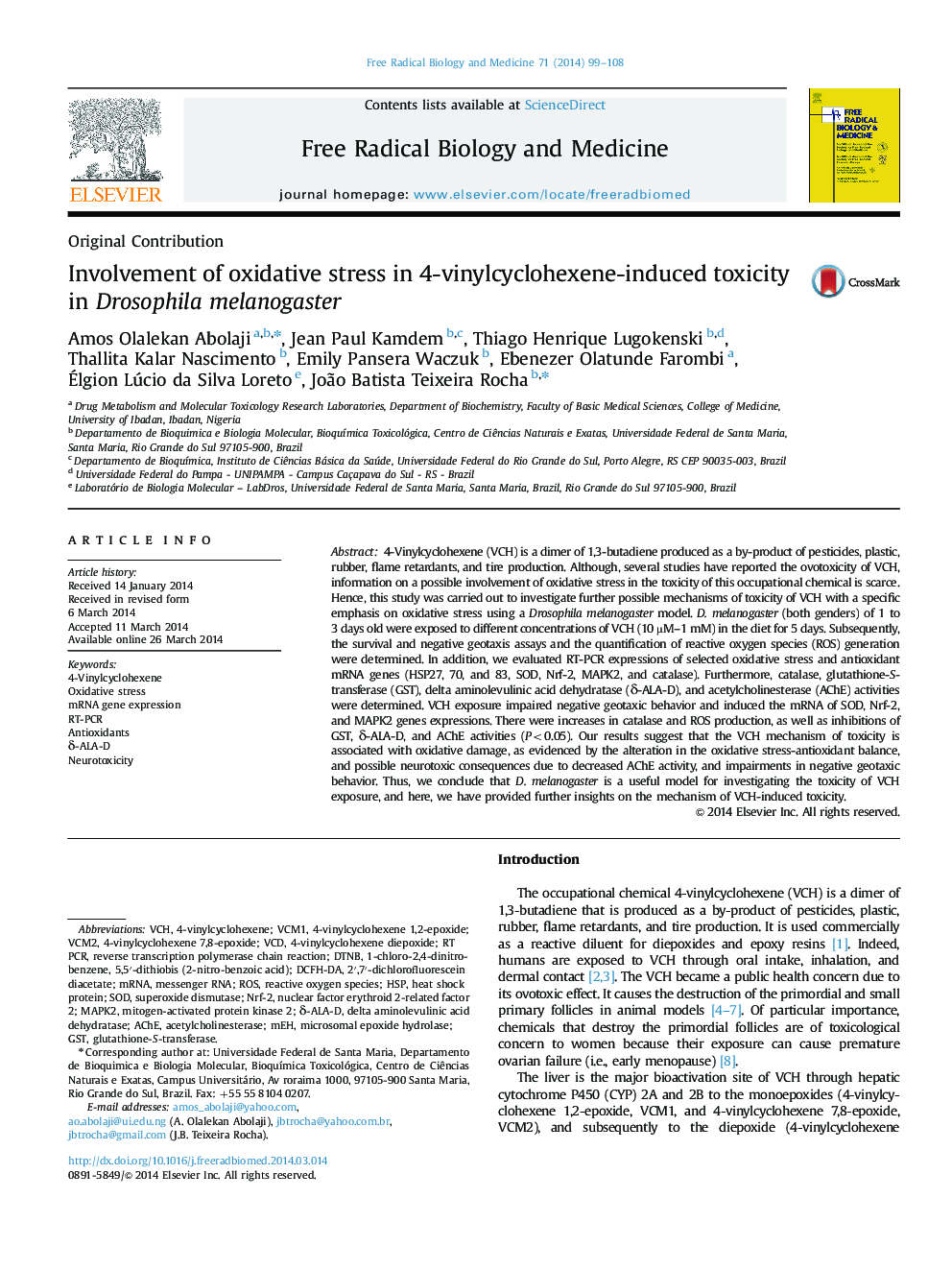| Article ID | Journal | Published Year | Pages | File Type |
|---|---|---|---|---|
| 8270345 | Free Radical Biology and Medicine | 2014 | 10 Pages |
Abstract
4-Vinylcyclohexene (VCH) is a dimer of 1,3-butadiene produced as a by-product of pesticides, plastic, rubber, flame retardants, and tire production. Although, several studies have reported the ovotoxicity of VCH, information on a possible involvement of oxidative stress in the toxicity of this occupational chemical is scarce. Hence, this study was carried out to investigate further possible mechanisms of toxicity of VCH with a specific emphasis on oxidative stress using a Drosophila melanogaster model. D. melanogaster (both genders) of 1 to 3 days old were exposed to different concentrations of VCH (10 µM-1 mM) in the diet for 5 days. Subsequently, the survival and negative geotaxis assays and the quantification of reactive oxygen species (ROS) generation were determined. In addition, we evaluated RT-PCR expressions of selected oxidative stress and antioxidant mRNA genes (HSP27, 70, and 83, SOD, Nrf-2, MAPK2, and catalase). Furthermore, catalase, glutathione-S-transferase (GST), delta aminolevulinic acid dehydratase (δ-ALA-D), and acetylcholinesterase (AChE) activities were determined. VCH exposure impaired negative geotaxic behavior and induced the mRNA of SOD, Nrf-2, and MAPK2 genes expressions. There were increases in catalase and ROS production, as well as inhibitions of GST, δ-ALA-D, and AChE activities (P<0.05). Our results suggest that the VCH mechanism of toxicity is associated with oxidative damage, as evidenced by the alteration in the oxidative stress-antioxidant balance, and possible neurotoxic consequences due to decreased AChE activity, and impairments in negative geotaxic behavior. Thus, we conclude that D. melanogaster is a useful model for investigating the toxicity of VCH exposure, and here, we have provided further insights on the mechanism of VCH-induced toxicity.
Keywords
DCFH-DAVCHRT PCRmRNA gene expressionδ-ALA-DNRF-2HspDTNBRT-PCRVCDGSTmRNA4-vinylcyclohexenemessenger RNAROSAntioxidantsAChEAcetylcholinesterasemEHOxidative stress4-Vinylcyclohexene diepoxideSODNeurotoxicitySuperoxide dismutasenuclear factor erythroid 2-related factor 2Microsomal epoxide hydrolasereverse transcription polymerase chain reactionHeat shock proteinReactive oxygen species
Related Topics
Life Sciences
Biochemistry, Genetics and Molecular Biology
Ageing
Authors
Amos Olalekan Abolaji, Jean Paul Kamdem, Thiago Henrique Lugokenski, Thallita Kalar Nascimento, Emily Pansera Waczuk, Ebenezer Olatunde Farombi, Ãlgion Lúcio da Silva Loreto, João Batista Teixeira Rocha,
